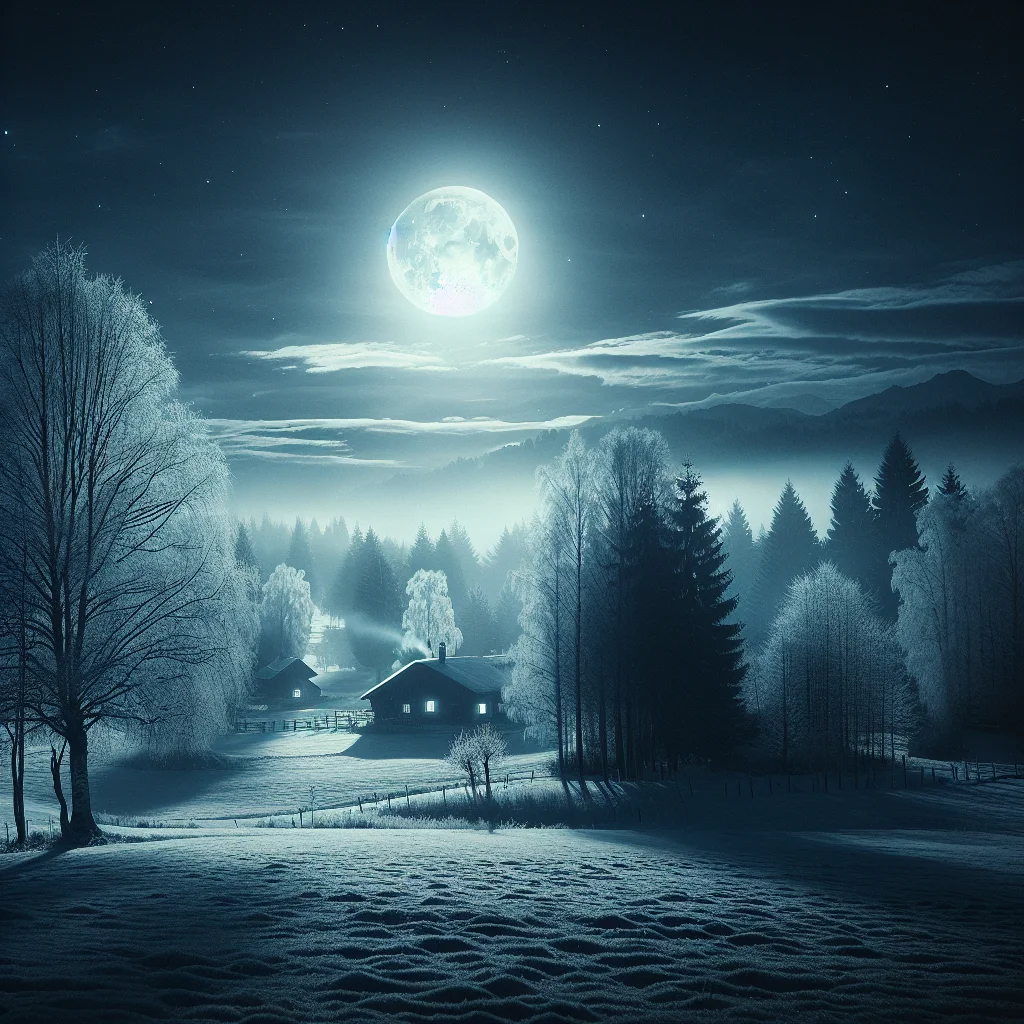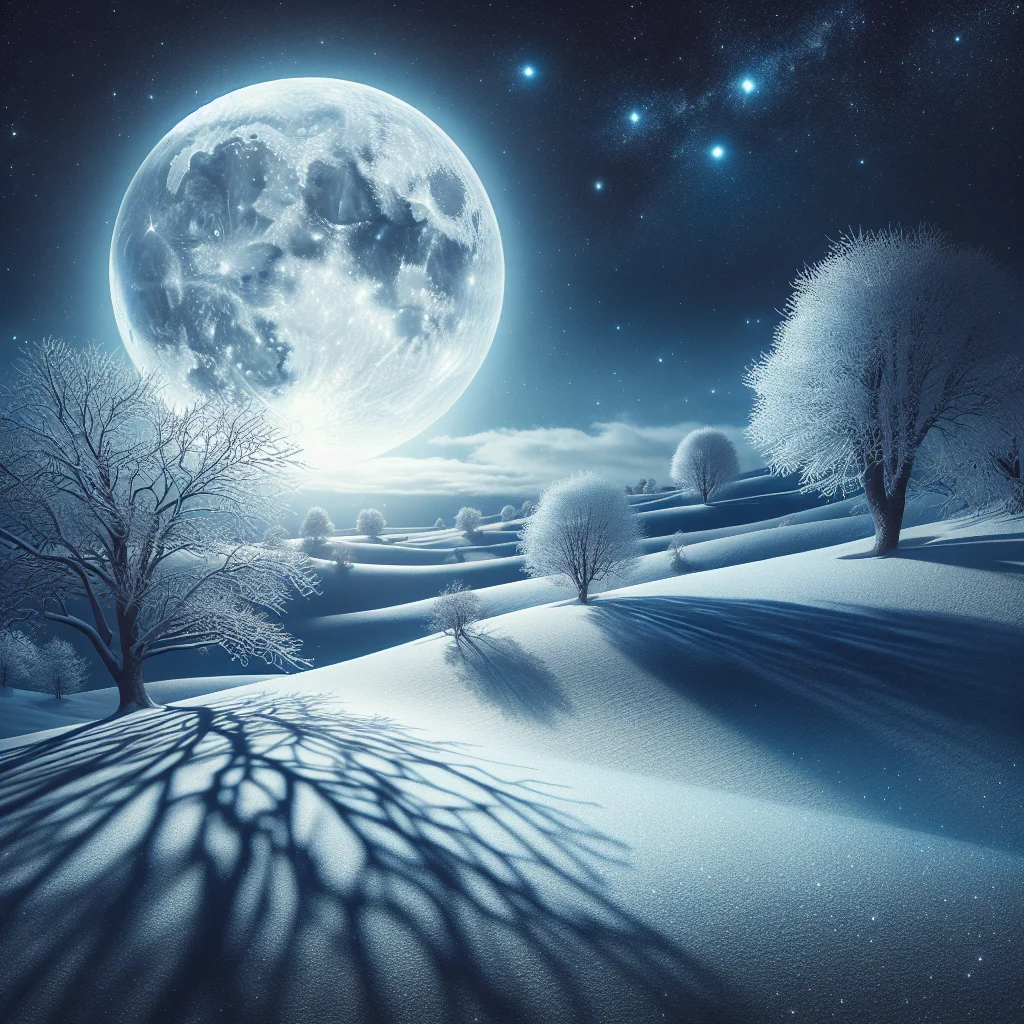As an Amazon Associate I earn from qualifying purchases.
↻
Last updated: December 24, 2025

Often referred to as the Cold Moon, December's full moon illuminates the winter sky with a brilliance unmatched by other celestial events. This nocturnal spectacle has captivated humanity for millennia, serving as a vital timekeeper for ancient cultures. The Native Americans, for example, christened it after the frigid conditions of the month it ushers in, a practice since adopted into modern folklore.
The historical significance of the December full moon is profound, as it signaled the time to hunker down for the deepest of winter’s chill. In agrarian societies, this lunar event traditionally indicated the cessation of the harvest season and a shift towards preserving resources for the cold months ahead. Once a beacon for survival, the December full moon now attracts astronomers and romantics alike, each yearning to capture its magic and mystique.
Today, the December full moon continues to fascinate, with its occurrence often coinciding with festive holidays and the promise of a new year on the horizon. A compelling aspect of the winter’s first full moon is its tendency to ride high in the night sky, creating long, cold shadows and playing a role in winter solstice celebrations around the world. This natural convergence amplifies its cultural resonance during a month replete with global festivities.
In an age dominated by technology, the December full moon still offers a universal experience, free to all who simply look up to the night sky. In fact, recent statistics suggest a surge in interest in amateur astronomy, much of it attributable to the lure of lunar observations. December's full moon provides an accessible opportunity for millions of people to participate in a shared moment of celestial wonder—a reminder of nature’s enduring calendar amidst our fast-paced lives.
html
What Makes December's Full Moon Unique? Discover Its Significance and Traditions
December's full moon, often hailed as the Cold Moon due to its occurrence during one of the chilliest months of the year, is a celestial event wrapped in a tapestry of cultural and astronomical significance. This lunar spectacle is not merely a phase in the moon's cycle; it represents a multitude of traditions and beliefs spanning across civilizations. In folklore, it marks a time of rest and reflection. Astronomically, it serves as a beacon in the winter night sky, signaling the proximity of the winter solstice and the longest night of the year. As readers continue through this article, they will uncover the deeper meanings behind December's full moon, its historical and cultural impacts, and the unique viewing opportunities it presents. Join us as we delve into the mysteries and enchantments of the Cold Moon, guiding you through a journey encompassing science, mythology, and celestial beauty.
Understanding December's Full Moon
December's Full Moon, traditionally known as the Cold Moon, captures the essence of the chilling temperatures and long, frosty nights of the northern hemisphere's winter. In 2023, the Cold Moon will reach its peak illumination on December 7th, at precisely 11:08 PM Eastern Standard Time. This is the moment when the celestial body, fully illuminated by the Sun's light, appears to be perfectly round to viewers on Earth.
Historical Significance and Cultural Names
The Full Moon of December has been called the Cold Moon by Native American tribes for centuries, a name that has persisted into modern use. This moniker reflects the typically cold weather that grips much of the United States during this time of year. Other names for this full moon include the Long Nights Moon and the Moon Before Yule. Among European cultures, it was known as the Oak Moon, while the Anglo-Saxon name was the Moon After Yule, recognizing the Winter Solstice and the Yuletide associated with December.
Astronomical Characteristics
From an astronomical perspective, December's Full Moon is unique because it transits across the sky for the longest time compared to other full moons throughout the year. This is due to the moon's elongated orbit, which is why it is sometimes also called the Long Nights Moon. The low trajectory across the horizon during this time of the year means that the moon has an extended presence in the night sky, with its light traveling through more of the Earth's atmosphere, giving it a rich, golden hue as it rises and sets.
Impact on Tides
December's Full Moon, as with any full moon, affects the Earth's tides due to the gravitational pull between the Earth and the Moon. During the full moon, the alignment of the Sun, Moon, and Earth in a configuration known as syzygy results in higher-than-average high tides, called spring tides, which are particularly noticeable along coastlines.
Folklore and Superstitions
The December Full Moon holds a powerful place in folklore and ancient beliefs. Many cultures viewed the full moon as a time of renewal and rebirth, with some superstitions suggesting it is an auspicious time for setting intentions or releasing old habits. The serene and bright appearance of the Cold Moon has been associated with clarity and purity in various traditions, and it has been celebrated in myths and stories correlating with the winter solstice.
Lunar Observation Activities
Lunar enthusiasts find December's Full Moon to be an excellent time for observation due to the longer nights and the often clear, crisp skies of the winter season. This provides optimal conditions for not only viewing the beauty of the Cold Moon but also for photography and stargazing. Telescopes and binoculars can offer enhanced views, revealing the detailed topography of the lunar surface, including craters, valleys, and the lunar maria.
Scientific Studies and Influence on Wildlife
Scientists take advantage of the December Full Moon to conduct studies on nocturnal wildlife behavior, as the extra light can influence animal activity patterns. Nocturnal animals that rely on the cover of darkness may change their hunting or foraging behaviors during the full moon when predators and prey alike are more visible.
In summary, December's Cold Moon captivates astronomers, artists, and romanticists alike. Its presence as the year winds to a close serves as a natural marker of time, reminding us of Earth's cycles and the interconnections between celestial and terrestrial life.
Ending with a statistic, it is fascinating to note that the luminance of a full moon, such as December's Cold Moon, is about 0.25 lux on Earth's surface, enough to cast discernible shadows and transform the nocturnal landscape.
Q1: What is the name of December's full moon?
A1: December's full moon is traditionally called the Cold Moon, reflecting the cold weather of this time of the year.
Q2: When can I see the December Full Moon?
A2: The December Full Moon occurs once a year, and its exact date and time depend on your location. It's best to check a lunar calendar or an astronomical website for the specific date and time in your area.
Q3: Are there any special rituals associated with the December Full Moon?
A3: Some cultures may have specific rituals or celebrations associated with the December Full Moon, often related to welcoming the winter and reflecting on the past year.
Q4: Does the December Full Moon affect human behavior or emotions?
A4: There is no scientific evidence to support the idea that the full moon, including the December Full Moon, has a direct effect on human behavior or emotions.
Q5: What is a supermoon, and can the December Full Moon be a supermoon?
A5: A supermoon occurs when a full moon coincides with its closest approach to Earth in its orbit, appearing larger and brighter in the sky. The December Full Moon can be a supermoon if this coincidence happens.
Q6: How does the December Full Moon influence tides?
A6: The full moon, including the December Full Moon, exerts a strong gravitational pull, leading to higher than usual high tides, known as spring tides.
Q7: Can I photograph the December Full Moon? Any tips?
A7: Yes, you can photograph the December Full Moon. Use a tripod to reduce camera shake, a long zoom lens for a clearer shot, and manually adjust your camera settings for the best exposure.
Q8: Is it common for the December Full Moon to coincide with lunar eclipses?
A8: Lunar eclipses can occur during any full moon when the moon passes into Earth's shadow. It is not more common in December than in other months, but it can happen.
Q9: Why do some people feel the December Full Moon is special?
A9: The December Full Moon is often seen as special due to its proximity to holidays and the winter solstice, which can imbue it with cultural significance and a sense of mystique.
Q10: What is the spiritual meaning of the December Full Moon?
A10: The spiritual meaning of the December Full Moon varies among different cultures and beliefs but often focuses on themes of introspection, release, and the culmination of the year's energies.

Conclusion
The December Full Moon, often referred to as the Cold Moon, signifies the onset of winter and has a rich tapestry of cultural significance. It functions as a cosmic beacon, heralding the transition into the colder months, and serves as a spiritual guide for many traditions around the world. Observations and celebrations tied to this lunation reflect themes of introspection, closure, and preparation for the upcoming cycle. With its increased luminosity and prominence in the night sky, the December Full Moon occupies an important place in astronomical study and timekeeping, enabling precise tracking of the lunar calendar and influencing tidal patterns.
In modern times, the December Full Moon continues to fascinate scientists and skywatchers alike. Its effects on the natural world are evident in animal behaviors and the subtle energetics of the Earth’s ecosystems. Additionally, the Cold Moon's spectacle provides a captivating subject for photographers and nature enthusiasts. This period is also embraced by various communities as a time to gather, reflect on the year that has passed, and set intentions for the new year. As it casts its glow on the frosty landscape, the December Full Moon reminds us of the enduring cycles of nature and the interconnectedness of all life.
Amazon and the Amazon logo are trademarks of Amazon.com, Inc, or its affiliates.
Continue Your Magical Journey
Free Witchcraft Starter Kit
Get 6 free printable PDFs: grimoire pages, moon calendar, spells, crystals, herbs, and tarot journal.
We respect your privacy. Unsubscribe anytime.
Enhance Your Practice
As an Amazon Associate, I earn from qualifying purchases.

